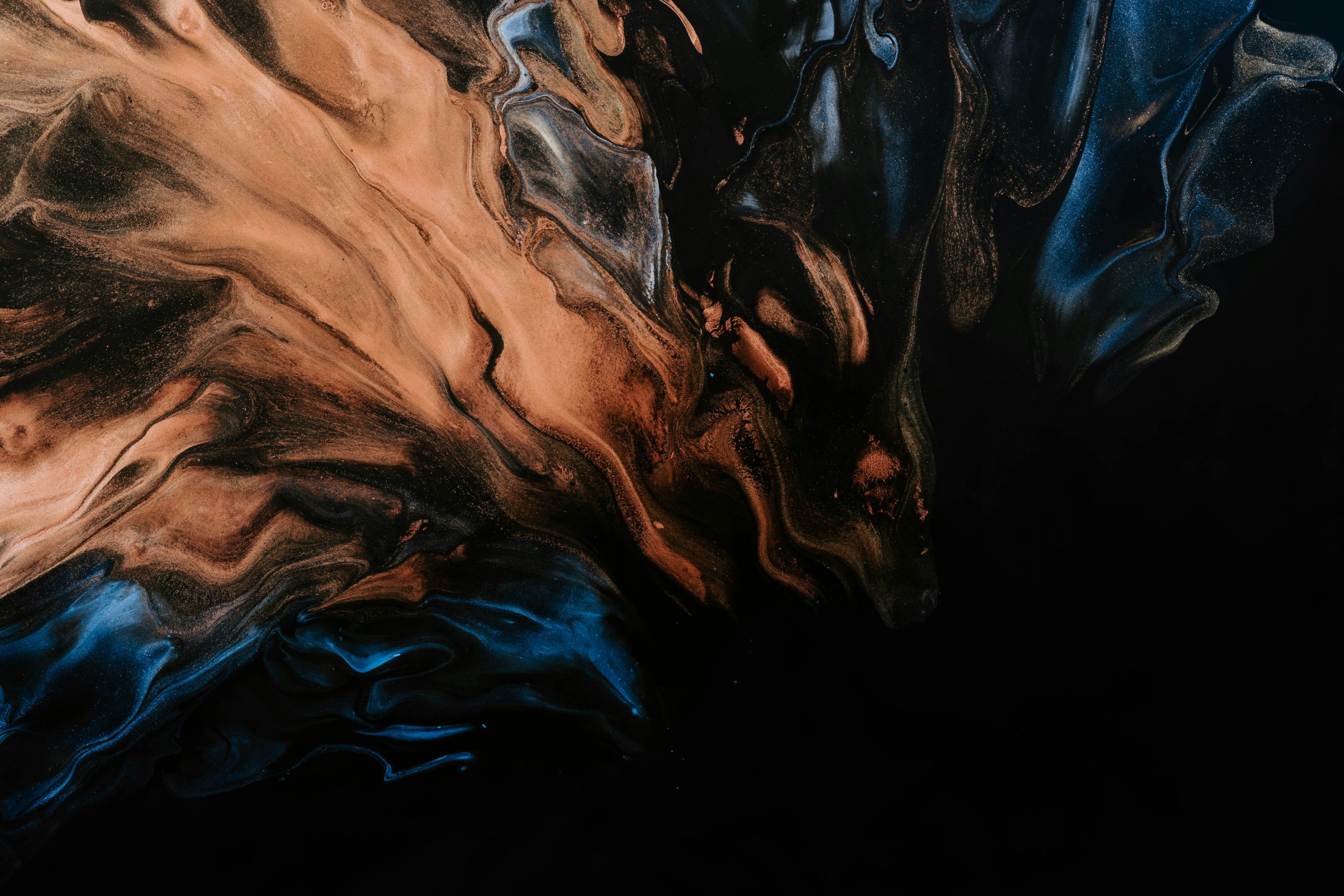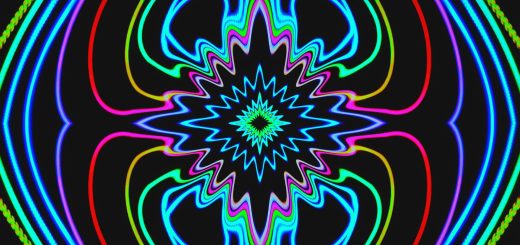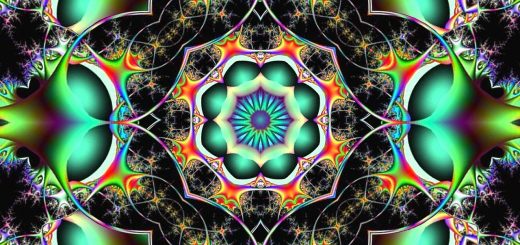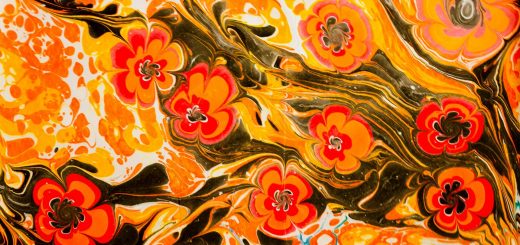Are Shadow People Dangerous?

Before diving in, please note: This post is for informational purposes only. If you’d like to know more about how we approach topics, feel free to check out our friendly Disclaimer Page.
Hey there, amazing readers! 🖐️ Just a quick note: yes, we know there are a lot of ads here. Trust us, we get it—it’s not the prettiest look, but they help us keep this blog alive and kicking. Those pesky little ads cover the costs of all the behind-the-scenes magic, from hosting and tech stuff to creating content we hope you’ll love.
We’re committed to delivering quality posts, and your support (even just sticking around despite the ads) means everything to us. So, bear with us, and thanks for helping us keep the good vibes rolling. Now, on to the fun stuff! 😉
TRANSLATE BUTTON AT THE END OF THE ARTICLE
A Quick Overview
Are Shadow People dangerous?
This question intrigues many of us.
Shadow People have found their way into countless discussions around the supernatural, the unexplained, and even our own fears.
In this article, we will explore every facet of these enigmatic figures, from their characteristics and cultural significance to the science behind them.
So, grab a cup of coffee, sit back, and let’s dive into the shadowy depths of this mystery!
What Are Shadow People? Unveiling the Mystery
Shadow People, as their name suggests, are typically described as dark, shadowy figures that seem to flit in and out of our vision.
They often appear as humanoid shapes, giving them a ghostly vibe.
People report seeing them mostly in peripheral vision, which can leave you feeling unnerved, to say the least.
Some enthusiasts believe that Shadow People are interdimensional beings or spirits.
Others think they could be manifestations of our subconscious fears.
Regardless of the interpretation, they evoke a strong emotional response.
I mean, who wouldn’t feel a chill creeping up their spine when they see a figure dart across the room?
Another fascinating aspect is their form.
Shadow People range from vague silhouettes to more defined shapes, sometimes even with glowing eyes!
This variety adds to the mystery.
People have described encounters that leave them questioning their reality.
The fear of the unknown often makes these experiences more intense.
These figures have also been linked to sleep paralysis.
For many, the sensation of being unable to move while seeing a shadowy figure can be terrifying.
The combination of fear and paralysis creates a cacophony of emotions that can last long after the encounter ends.
So, what do we really know?
Essentially, Shadow People are elusive entities that give us a glimpse into something beyond our understanding.
Are they friendly?
Hostile?
Or perhaps they are just benign observers?
The answer remains shrouded in mystery.
The Fascination with Shadow People in Popular Culture
The allure of Shadow People has permeated popular culture in various ways.
Movies, TV shows, and books frequently portray these figures as harbingers of doom or as ominous entities lurking in the dark.
For example, in horror films, they often symbolize unresolved trauma or fear, enhancing the overall suspense and thrill.
Podcasts and YouTube channels dedicated to the paranormal often feature tales of Shadow People.
As a listener, you can’t help but lean in closer when someone recounts their chilling encounters.
The personal touch adds a layer of authenticity that keeps us captivated.
Social media also plays an interesting role.
Platforms like Instagram and TikTok are teeming with stories and art depicting Shadow People.
This has created a community where experiences are shared, validated, and discussed.
It’s fascinating how these shadowy figures bring people together, offering a sense of camaraderie in the face of fear.
Moreover, Shadow People have inspired various types of merchandise.
From T-shirts emblazoned with spooky graphics to mystical candles meant to ward off these entities, the fascination is tangible.
It’s amazing to see how something so eerie can be transformed into a source of creativity and craftsmanship.
In essence, Shadow People have become a cultural phenomenon.
They resonate with our collective fears and curiosities, making them a vivid part of our storytelling landscape.
Whether in a horror film or a heartfelt podcast, their presence continues to spark intrigue.
Shadow People: A Historical Perspective on Their Origins
The concept of shadowy figures lurking in the dark is far from new.
Ancient civilizations across the globe have tales of spirits and shadows.
In various cultures, these figures were often treated with reverence and fear.
Historical texts from different eras mention shadow-like entities.
For instance, ancient Egyptians believed in a spiritual realm filled with both benevolent and malevolent beings.
Many cultures associated these figures with the unseen world, acting as guides or warnings.
Throughout history, Shadow People have been linked to sleep phenomena.
For example, during the Middle Ages, the term "night hag" described a figure that would sit on a person’s chest while they slept, causing a feeling of suffocation.
This entity shares similarities with contemporary descriptions of Shadow People experienced during sleep paralysis.
The 20th century saw an uptick in interest in the paranormal, leading to more documented encounters.
Researchers have cataloged numerous accounts, noting similarities across cultures and time periods.
It’s fascinating how these experiences connect people globally, transcending cultural boundaries.
Interestingly, some researchers speculate that these figures may be archetypes of fear, deeply rooted in our psyche.
The connection between shadowy figures and fear can be traced back to early human history when darkness was often associated with danger.
In summary, the historical context of Shadow People enriches our understanding of them.
They’ve adapted, morphed, and resonated through the ages, leaving a footprint in human consciousness.
This fascinating legacy invites us to explore our collective fears and the unknown.
Common Characteristics of Shadow People Encounters
When discussing Shadow People, certain characteristics consistently emerge from people’s encounters.
While each experience is unique, some common threads weave through these narratives.
Visual Description: Most people describe them as dark, shadowy forms.
They often lack detail, appearing more like silhouettes.
Sometimes they are humanoid, while other times they appear more amorphous.
Movement: Shadow People are notorious for their speed.
Many accounts describe them darting quickly across a room or disappearing in an instant.
Their erratic movements contribute to the fear they evoke.
Location: Encounters often take place in dimly lit areas or during the night.
Many people report seeing them in bedrooms, hallways, or places where they feel vulnerable.
Emotional Response: Fear and anxiety are common reactions.
Many individuals experience a sense of dread or foreboding when they encounter these figures.
Others report feeling watched or followed.
Physical Sensations: Some individuals describe a feeling of pressure or heaviness, especially during sleep paralysis episodes.
This sensation can amplify the fear associated with the encounter.
Auditory Experiences: Occasionally, people report hearing whispers or low murmurs.
These sounds can heighten the overall tension during an encounter.
Connection to Sleep: Many accounts link Shadow People to sleep disturbances.
Sleep paralysis, nocturnal fears, and nightmares often intersect with these experiences.
Cultural Influence: Cultural background can influence how people interpret their experiences.
Variations in descriptions and emotions often reflect the beliefs and fears of a specific culture.
Recurring Encounters: Some individuals report multiple encounters over time, suggesting a potential pattern or connection with certain locations or emotional states.
Interactions: Rarely, people describe feeling a connection to Shadow People, leading to the belief that they might be guardians or guides.
However, such experiences are less common.
In essence, the characteristics of Shadow People encounters offer insights into our deepest fears and emotions.
They serve as windows into our psyche, reflecting our relationship with the unknown.
Are Shadow People Real? Exploring the Evidence
Are Shadow People real?
This query often fills discussions among enthusiasts and skeptics alike.
The evidence is a mixed bag, making it challenging to reach a consensus.
Firstly, personal testimonies abound.
Thousands of people have shared their experiences, claiming to have encountered Shadow People.
While anecdotes can hold great weight, they are subjective.
They offer insights into individual experiences but lack the rigor of scientific validation.
Secondly, cultural beliefs play a significant role.
Many cultures have their own lore surrounding shadowy figures.
This shared belief can lend a sense of legitimacy to the experiences, suggesting a collective acknowledgment of something uncanny.
Scientific explanations often lean toward psychological phenomena.
Sleep paralysis, hallucinations, and the brain’s interpretation of shadows can all contribute to the perception of these entities.
Neuroscience has shown that our brains can create vivid images based on anxiety and stress levels, making encounters seem very real.
Moreover, environmental factors can influence perceptions of shadowy figures.
Low light, fatigue, and even certain substances can create visual distortions.
These factors might lead us to perceive shadows in ways that trigger fear.
There are also intriguing connections to reports of UFO sightings.
Some enthusiasts suggest that Shadow People might be extraterrestrial in nature.
While this theory is wildly speculative, it adds an extra layer of mystery to the conversation.
In conclusion, whether or not Shadow People are real depends on how we interpret the evidence.
They might not be tangible in the same way as physical objects, but the emotional and psychological impact of these encounters is undeniably real.
The Science Behind Shadow People: Analyzing the Phenomenon
Delving into the science of Shadow People reveals a fascinating interplay between psychology, neurology, and environmental factors.
Understanding the mechanics behind these experiences can demystify them, providing insights into our human psyche.
Sleep paralysis is one avenue often explored.
During sleep paralysis, the brain wakes up while the body remains in a state of paralysis, often resulting in vivid hallucinations.
Many people report seeing shadowy figures during these unsettling episodes, leading to a mix of fear and confusion.
The brain’s processing of shadows also plays a crucial role.
Our brains are wired to detect movement, especially in low-light conditions.
This sensitivity can lead us to misinterpret ordinary shadows as figures, especially when we’re anxious or tired.
Another fascinating angle involves the concept of pareidolia.
This is the tendency of our brains to perceive familiar patterns in random stimuli.
For example, seeing a shadow in the corner of your eye might trigger a response that makes you think of a person or figure, even when it’s just a trick of light.
Environmental factors should also be considered.
Low light, flickering bulbs, and even specific layouts of a room can contribute to the eerie atmosphere that fosters encounters.
This interplay with our surroundings may enhance our feelings of unease and encourage the perception of shadowy figures.
Some researchers have explored the historical context of these figures.
The idea of spirits or entities has been present in human culture for centuries.
The brain’s predisposition to interpret these encounters through the lens of our cultural beliefs can further shape our experiences.
In essence, the science behind Shadow People highlights the complex relationship between our minds, our environments, and our perceptions.
These encounters are not merely about the figures themselves but about how we interpret fear and the unknown.
How Do Shadow People Make Us Feel? A Psychological Dive
The emotional landscape surrounding Shadow People encounters is rich and varied.
Fear, anxiety, intrigue, and even curiosity often intermingle in a complex dance of human emotion.
When we encounter a Shadow Person, fear is typically the dominant feeling.
This can stem from the unknown.
What are they?
Why are they here?
The uncertainty can make the heart race and the mind whirl.
Many people describe a suffocating sense of dread that lingers long after the encounter.
Interestingly, some individuals report feelings of fascination or curiosity.
A part of them wants to know more about these figures and what they represent.
This duality makes the experience even more complex.
We are terrified, yet intrigued.
There’s also the element of personal history.
For some, encounters with Shadow People can trigger past traumas or fears.
They may represent something deeper, such as unresolved issues or emotional pain.
This psychological connection can make encounters feel even more intense.
Moreover, cultural influences shape our reactions.
In cultures where Shadow People are viewed as malevolent, fear might dominate the experience.
Conversely, in cultures that see them as guardians or messengers, individuals might feel a sense of awe or wonder.
The impact of these encounters on mental health can also be significant.
Persistent fears or anxiety linked to Shadow People may lead individuals to develop phobias or sleep disorders.
The mind’s tendency to replay these experiences can perpetuate fear, affecting daily life.
In conclusion, the emotional responses elicited by Shadow People provide a window into our psyche.
They reflect our most profound fears, curiosities, and cultural beliefs about the unknown.
Are Shadow People Dangerous? Myths vs. Reality
The question of whether Shadow People are dangerous often stirs debate.
Popular culture tends to depict them as malevolent beings, but the reality is much more nuanced.
First, let’s consider the myths.
Many people believe that Shadow People are harbingers of doom or manifestations of evil.
This perception is often fueled by horror films and ghost stories that portray them as sinister figures lurking in the dark.
While these narratives make for great entertainment, they can skew our understanding of these entities.
In truth, most encounters with Shadow People are passive.
Many individuals report seeing them without experiencing any direct harm or negative consequences.
The emotional impact, however, can be real.
Fear and anxiety often accompany these experiences, but that doesn’t mean the figures themselves pose a physical threat.
A significant aspect to consider is the intention behind these encounters.
While some people may feel threatened, others describe their experiences as neutral or even comforting.
The idea that Shadow People might serve as guides or protectors has emerged in some narratives, offering a different perspective on their nature.
However, psychological factors play a crucial role.
Anxiety, fear, and stress can amplify the feelings associated with these experiences.
When we approach an encounter with a fearful mindset, we are more likely to perceive danger, even if the entity does not present an actual threat.
In the end, whether Shadow People are dangerous largely depends on personal interpretation.
They can evoke fear and anxiety, but interpretations greatly vary.
Understanding this can help mitigate the apprehension surrounding these shadowy figures.
Personal Stories: Encounters with Shadow People
Personal stories bring the phenomenon of Shadow People to life.
Anecdotes often evoke strong emotions and offer relatable experiences.
I’ve read countless accounts that vary wildly in detail, each one adding a unique layer to the tapestry of encounters.
One story that caught my attention involved a young woman who saw a shadowy figure in her childhood home.
She described feeling a wave of ice-cold air as the figure moved through her room.
Instead of fleeing in fear, she just watched, intrigued.
Surprisingly, she felt no malice, only curiosity.
This experience left her with a sense of wonder about the unexplained.
Another account detailed a man’s experience during a sleepless night.
He reported seeing multiple Shadow People in his bedroom.
The figures appeared to be watching him.
Although panic surged through him, he later recounted feeling an unexplainable sense of calm.
It left him pondering whether they were merely observers rather than threats.
On the flip side, some stories are undeniably chilling.
A woman described waking up to find a shadowy figure hovering over her.
She felt paralyzed with fear, unable to move or scream.
This encounter lingered in her mind, affecting her sleep for weeks.
The emotional toll was real, demonstrating the profound impact these experiences can have.
I’ve also encountered stories from individuals who believed they were being stalked by Shadow People.
The repeated sightings in various locations led them to feel as if they were being followed.
This persistent fear turned their daily lives upside down, highlighting how deeply these encounters can affect mental health.
While personal experiences do vary, they collectively contribute to a broader understanding of Shadow People.
They remind us that the unknown can evoke a spectrum of emotions, from fear to fascination.
Coping Strategies for Dealing with Shadow People
Dealing with encounters involving Shadow People can be tricky.
However, there are coping strategies that may help alleviate fear and stress associated with these experiences.
Grounding Techniques: Practicing mindfulness can help manage anxiety.
Focusing on your surroundings and breathing deeply can bring a sense of calm.
Create a Safe Space: Make your environment feel secure.
Soft lighting, comforting objects, or calming scents can transform a space that feels ominous.
Talk About It: Sharing your experiences can help lessen the emotional weight.
Whether with friends, family, or online communities, discussing your feelings can provide relief.
Educate Yourself: Understanding more about the phenomena can demystify your experiences.
Knowledge can help dispel fear, turning the unknown into something more manageable.
Journal Your Feelings: Writing about your encounters can provide clarity.
It offers a way to process emotions and patterns that may emerge.
Seek Professional Help: If encounters lead to significant anxiety or distress, consider speaking with a mental health professional.
They can help navigate feelings and provide coping strategies.
Establish a Nighttime Routine: A consistent bedtime routine can promote relaxation and reduce nighttime anxiety.
Activities like reading or meditating can create a calming atmosphere.
Limit Exposure: If you find that movies or books about Shadow People heighten your anxiety, it might be worth taking a break from that content.
Protect your mental space.
Use Protective Symbols: Some individuals find comfort in using symbols, crystals, or rituals believed to ward off negative energy.
This can provide a sense of control over your environment.
Stay Open-Minded: Embrace the mystery.
Sometimes, reframing your perspective can change how you feel about these encounters.
They can serve as prompts for reflection and growth.
Ultimately, coping with encounters involving Shadow People requires self-care and strategy.
By addressing the emotional impact, we can reclaim our sense of security and peace.
Shadow People in Different Cultures: A Global View
Shadow People aren’t confined to one culture; they’re a global phenomenon, appearing in various forms across the world.
Different cultures interpret these entities through their unique lenses, adding depth to the understanding of these mysterious figures.
In Latin American cultures, for instance, “La Llorona” is a legendary figure often associated with shadowy hauntings.
She is said to appear as a wailing woman in white, searching for her lost children.
Her connection to shadows creates an eerie atmosphere and symbolizes grief and loss.
Meanwhile, in the Middle East, some believe in “Djinn,” supernatural beings that can take on shadowy forms.
Djinn are often depicted as tricksters, capable of good or evil.
Their fluid nature mirrors the duality of Shadow People, showcasing how fear and fascination can intertwine in different cultural narratives.
Asian cultures also have their interpretations.
In Japan, the concept of “Yurei” refers to spirits of the deceased that may linger in shadowy forms.
These figures often represent unfinished business or deep sorrow, revealing how shadows can embody human emotions.
Even in Indigenous cultures, shadowy entities feature prominently.
Some Native American tribes speak of “Shadow People” as tricksters or beings that traverse between worlds.
Their nature often reflects the complex relationship between humanity and the spirit world.
In Western cultures, the portrayal of Shadow People has often leaned toward the sinister.
Movies and literature have shaped our understanding, leading to a perception of them as malevolent.
However, this view can be limiting, disregarding the more benign interpretations found in other cultures.
Ultimately, the global perspective on Shadow People illustrates the rich tapestry of human experience.
Our interpretations are deeply rooted in cultural beliefs and emotional responses to the unknown.
The Silver Lining: Embracing the Unknown with Joy!
As we wrap up our exploration of Shadow People, it’s essential to find the silver lining in this mysterious phenomenon.
While they evoke fear and uncertainty, embracing the unknown can also lead to personal growth and discovery.
Every encounter with the inexplicable provides us with an opportunity to reflect on our fears and beliefs.
Instead of viewing these experiences solely through a lens of dread, we can savor the curiosity they inspire.
What if these shadowy figures challenge us to confront our deepest anxieties?
What if they serve as reminders that there’s more to reality than what we can see?
History shows us that many people have transformed their fears into art, writing, and shared stories.
Creativity often arises from the shadows.
Whether it’s through painting, music, or storytelling, the influence of Shadow People can lead us to express ourselves in ways that reveal our innermost thoughts.
Moreover, engaging with the mystery can foster a sense of community.
Sharing experiences with others can create connections that remind us we’re not alone in our fears.
The conversation surrounding Shadow People can build bonds that transcend individual experiences.
Finally, let’s remember that embracing the unknown can lead to joy.
The world is filled with mysteries, and while some may be unsettling, they also invite us to explore, learn, and grow.
So, the next time you find yourself contemplating Shadow People, lean into the curiosity they evoke.
After all, life thrives on mystery, and who knows what wonders lie just beyond the shadows?
Conclusion
Are Shadow People dangerous?
The answer is complex and deeply personal.
Our encounters with these shadowy figures reveal much about our fears, cultures, and the human experience.
Whether viewed as ominous entities or benign observers, they invite us to reflect on the unknown.
By exploring the origins, cultural narratives, and psychological aspects of Shadow People, we gain insights into our relationship with fear and the unexplained.
Let’s embrace the mystery and allow it to spark our curiosity and creativity.
After all, the shadows can lead us to unexpected places if we dare to venture into the unknown.
So, keep your heart open and your mind curious—the shadows might just surprise you!

The Enlightenment Journey is a remarkable collection of writings authored by a distinguished group of experts in the fields of spirituality, new age, and esoteric knowledge.
This anthology features a diverse assembly of well-experienced authors who bring their profound insights and credible perspectives to the forefront.
Each contributor possesses a wealth of knowledge and wisdom, making them authorities in their respective domains.
Together, they offer readers a transformative journey into the realms of spiritual growth, self-discovery, and esoteric enlightenment.
The Enlightenment Journey is a testament to the collective expertise of these luminaries, providing readers with a rich tapestry of ideas and information to illuminate their spiritual path.
Our Diverse Expertise 🌟
While our primary focus is on spirituality and esotericism, we are equally passionate about exploring a wide range of other topics and niches 🌍📚. Our experienced team is dedicated to delivering high-quality, informative content across various subjects ✨.
To ensure we provide the most accurate and valuable insights, we collaborate with trusted experts in their respective domains 🧑🏫👩🏫. This allows us to offer well-rounded perspectives and knowledge to our readers.
Our blog originally focused on spirituality and metaphysics, but we’ve since expanded to cover a wide range of niches. Don’t worry—we continue to publish a lot of articles on spirituality! Frequently visit our blog to explore our diverse content and stay tuned for more insightful reads.





